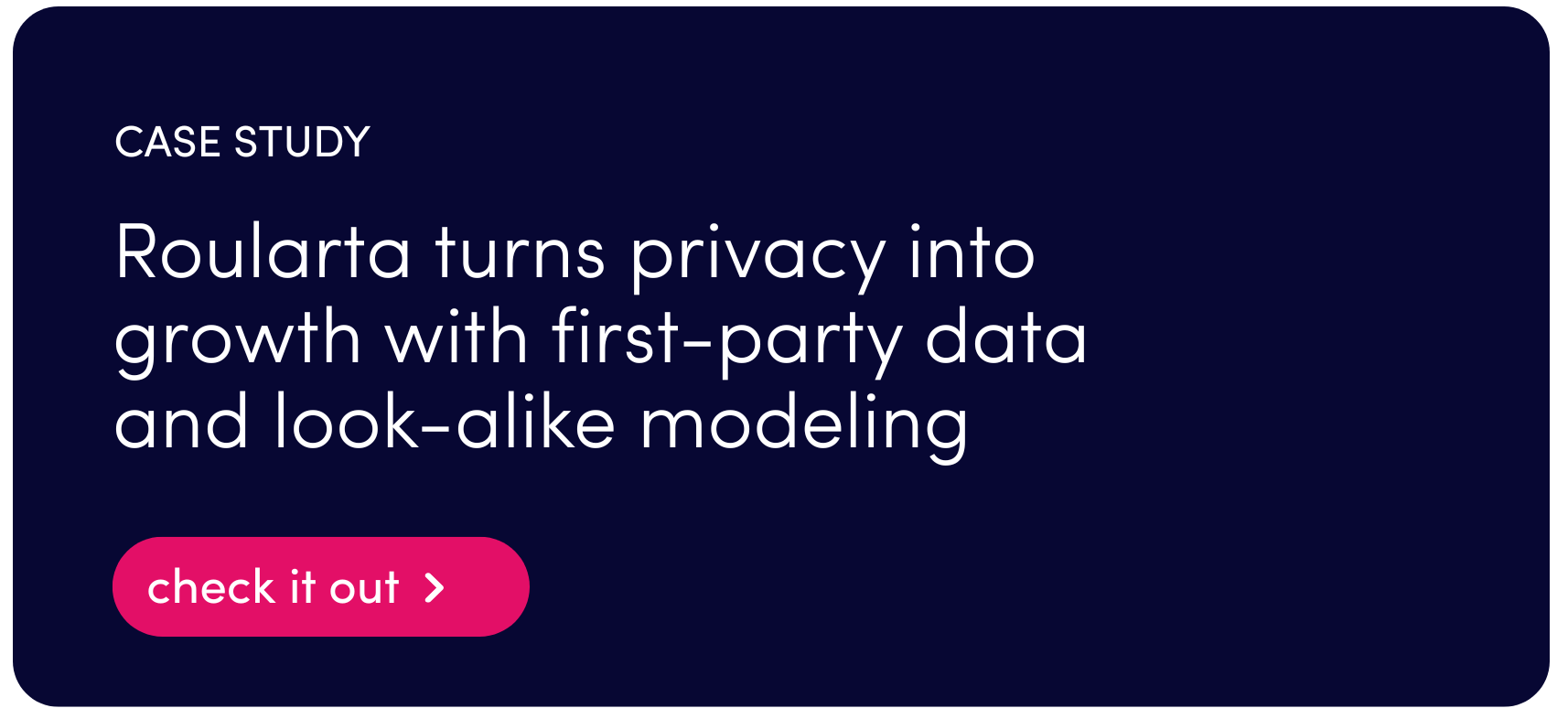-
Unified Customer Data
AI & Automation
Look-alike Modeling: a Comprehensive Guide to Customer Acquisition (part 2)
 Tijmen ter Beek
Tijmen ter Beek

In last week’s post, we explored how look-alike modeling works and the factors that make it successful. In this follow-up, we focus on the tangible benefits this data-driven approach offers and the challenges you need to consider when applying it.
Benefits of Look-alike Modeling
Look-alike modeling is more than a technical exercise—it’s a strategic way to optimize targeting, attract high-value customers, and create personalized experiences that drive measurable results. Here’s how it helps your business:
-
Reach highly relevant audiences: By analyzing your most valuable customers, look-alike models identify new prospects with similar characteristics, allowing your marketing to focus on those most likely to convert. This precision reduces wasted ad spend and increases campaign efficiency.
-
Boost ROI: Targeting high-value prospects optimizes your marketing budget. Look-alike modeling helps increase conversions while lowering acquisition costs, providing a measurable lift in revenue.
-
Attract new customers: Expanding your audience with prospects who closely resemble existing loyal customers ensures higher quality leads. Over time, this leads to stronger customer relationships, higher profitability, and sustainable growth.
-
Gain actionable customer insights: By studying patterns in existing customer behavior, you can uncover trends and preferences that inform campaign strategies, refine messaging, and enhance personalization across all touchpoints.
-
Deliver personalized experiences: With detailed profiles, marketers can craft tailored messages, offers, and content for each audience segment, increasing engagement and satisfaction.
Key challenges and considerations
While the benefits are significant, successful look-alike modeling requires careful attention to potential obstacles:
-
Data quality: Accurate, complete, and representative data is the foundation of any look-alike model. Missing or biased data can skew results and reduce targeting effectiveness.
-
Model complexity: Avoid overfitting, where the model is too closely aligned with the training data and performs poorly on new data. Balance model complexity with interpretability and ensure hyperparameters are properly tuned.
-
Ethics and privacy: Always comply with relevant data protection laws, obtain proper consent, and avoid targeting based on sensitive or protected characteristics. Models should not perpetuate biases or stereotypes.
-
Dynamic audiences: Customer behaviors and preferences evolve over time. Regularly retraining your look-alike models ensures they remain accurate and relevant, capturing new trends and changes in behavior.
By carefully addressing these challenges and considerations, businesses can maximize the benefits of look-alike modeling and leverage its power to drive customer acquisition and growth.
How look-alike modeling drives tangible business results
When implemented correctly, look-alike modeling turns data into actionable insights that deliver measurable outcomes:
-
Precision targeting: Your campaigns reach the most relevant prospects, reducing wasted spend.
-
Higher engagement: Personalized campaigns resonate better with your audience, improving click-through rates and conversions.
-
Optimized marketing spend: By focusing on high-potential prospects, you maximize the ROI of every marketing dollar.
-
Stronger customer loyalty: Targeting the right audience helps build lasting relationships and long-term customer value.
-
Scalable personalization: Once set up, look-alike models can continuously refine targeting and recommendations at scale.
-
Real-world applications
Brands like Roularta, Odido, and Just Brands leverage look-alike modeling to improve their customer acquisition efforts. For example:
-
Roularta: By combining first-party data with predictive look-alike models, Roularta identifies audiences most likely to engage with new content and subscriptions.
-
Odido: Uses look-alike modeling to orchestrate real-time customer journeys, ensuring the right message reaches the right person at the right moment.
-
Just Brands: Enhances campaign efficiency and ROI by targeting new prospects who mirror the behavior and preferences of their best customers.
Takeaway: data is only valuable when activated
Simply collecting data isn’t enough. The true value lies in activating it—turning raw data into actionable insights that deliver personalized experiences, increase engagement, and drive business growth. Look-alike modeling provides a structured way to achieve this at scale.
At GX, we help businesses select and implement the right data solutions—whether CDPs, data warehouses, or composable architectures—and guide them through every step, from integration to real-time activation, ensuring data works for your business, not the other way around.
Would you like to know more about how an organization can effectively implement and optimize look-alike modeling to ensure optimal performance and achieving marketing objectives. Check out this case from Roularta.

.png)
-1.png)

